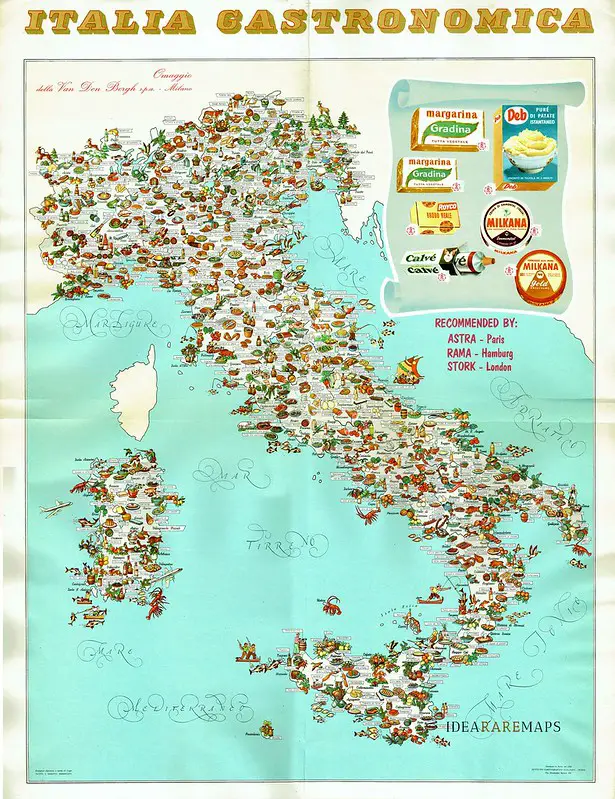Atlas of Spanish Food
Ever wondered what Spain would look like if it were made entirely of food?
It turns out, quite delicious. In this post, we’ll explore three creative maps that use regional ingredients – from olives and jamón to anchovies and cheese – to represent the culinary diversity of Spain. These aren’t just fun visuals – they’re packed with local flavor, showing how each region has its own specialty.
Let’s start with the most artistic of the three.

The first map transforms the Iberian Peninsula into a full charcuterie board.
Here, the north is dominated by deep red cured meats and beans, echoing the hearty cuisine of regions like León and Asturias. A tentacle of octopus drapes over Galicia – no surprise, since pulpo a la gallega is one of the area’s most beloved dishes. Further south, wedges of cheese stretch across central Spain, and the map gets brighter and fresher as we move into the olive and tomato-covered south.
It’s an elegant collage made from real ingredients, positioned roughly in their geographic homes. No labels, just flavor. It’s a great way to appreciate how deeply food and place are connected.

If the first map left you guessing, this next one by TravelSupermarket fills in the blanks. It uses the same food-for-territory idea but adds helpful region names and dish labels.
Here are a few standout pairings:
- Basque Country – pickles of Gilda
- Castile La Mancha – manchego
- Galicia – octopus
- Canary Islands – avocado
- Andalusia – artichokes
- Asturias – clams
- Navarra – chorizo
- Aragon – peaches
- Castile and Leon – jamón
- Extremadura – tortilla
- Murcia – smoked paprika
- Cantabria – anchovies
- Valencia -paella
- Balearic Islands – prawns
- La Rioja – black grapes

Now that we’ve looked at general regional foods, let’s zero in on something very specific-and very Spanish: cheese.
This third map, created by Álvaro Merino for El Orden Mundial, highlights all the cheeses of Spain with protected origin status (DOP). These are cheeses legally tied to their region, like Champagne is to France.
Some of the highlights:
- Manchego (Castile-La Mancha): Probably Spain’s most famous cheese, made from sheep’s milk.
- Cabrales (Asturias): A potent blue cheese aged in mountain caves.
- Mahon-Menorca (Balearic Islands): Smooth and salty, made from cow’s milk.
- Torta del Casar and La Serena (Extremadura): So creamy they’re eaten with a spoon.
- Idiazábal (Basque Country/Navarra): Smoky and nutty, often made from raw sheep’s milk.
- Murcia al vino (Murcia): A goat cheese bathed in red wine.
This map is perfect for anyone who loves cheese – or wants to add a stop or two to their itinerary based solely on dairy. It’s a great reminder of how diverse even one category of Spanish food can be.
Together, these three maps offer a fun, edible tour of Spain. One shows off the artistry, another provides clarity, and the third drills down into the cheesy details. Whether you’re a traveler, a cook, or just someone who enjoys good food, it’s hard not to appreciate the variety packed into one country.









Alex, I’m sorry but, this map is utterly wrong… Almost nothing is right.
Also, it’s “Pà amb tomàquet”.